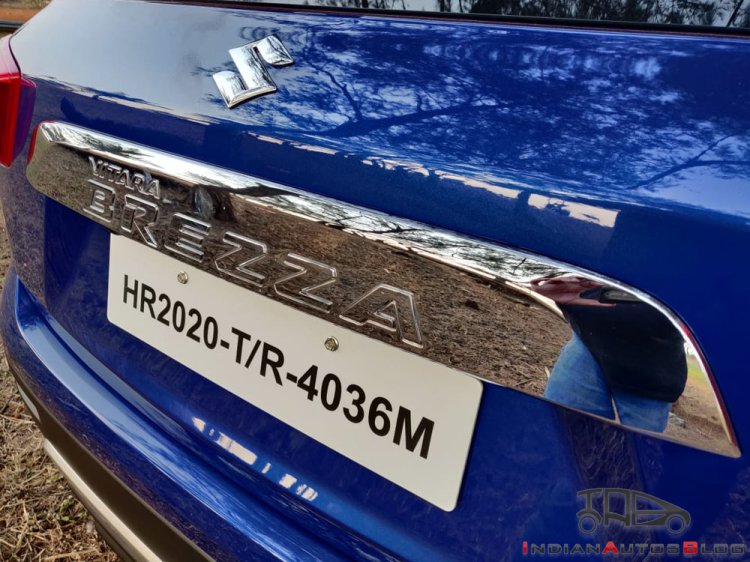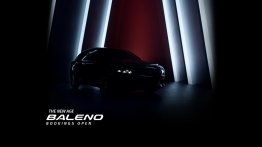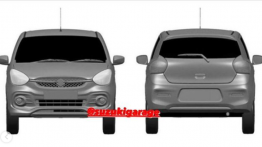Prologue
First launched in 2016, the Maruti Vitara Brezza has been the undisputed leader of the sub-4-metre SUV segment. That said, the influx of fresher rivals, along with its manufacturer's decision to give up on the diesel engines, has led to the introduction of a refreshed version that features some visual tweaks and, more importantly, a 1.5-litre petrol engine. Other than this, the updated Brezza even gets a handful of new features that help it stay relevant in the company of its more modern rivals. Our Maruti Vitara Brezza review here should help you figure out if the mid-cycle facelift makes India's favourite SUV even more appealing.
Design and Styling
For the most part, the updated version looks close enough to the pre-facelift model to make pretty it tough to tell them apart. A careful eye, however, would spot a reworked grille and a refreshed bumper that holds a faux skid plate. The headlights are new, too, and now carry LED fixtures. Other changes to the styling package include a new signature for LED DRLs, machined alloy wheels and a new rear bumper. Finally, the new exterior colour options, which include Torque Blue and Sizzling Red single-tone, and Sizzling Red with Midnight Black roof, Torque Blue with Midnight Black roof and Granite Grey with Autumn Orange roof, round up the updates for the exterior of the 2020 Maruti Vitra Brezza facelift.
The interior has also been slightly spruced up. The most crucial update here is the advent of the SmartPlay Studio touchscreen infotainment system. The overall design is the same as that of the old model. Dual-LED projector headlamps, leather-wrapped steering wheel, auto-dimming IRVM, auto-retracting ORVMs and LED tail lamps are some of the equipment highlights of the new Maruti Vitara Brezza.
Also Read - Toyota-badged Updated Maruti Vitara Brezza to launch in April
Performance
The D13A 1.3-litre oil-burner of the pre-facelift version has made way for the K15B 1.5-litre naturally-aspirated petrol engine from the Ciaz and the Ertiga. The motor outputs a maximum of 103 bhp and 138 Nm. Transmission options include a 5-speed manual and a 4-speed torque-converter automatic unit. The latter features the SHVS mild-hybrid technology, which could, if demand persists, even make it to the manual variant. The ARAI-rated fuel efficiency figures are pegged at 17.03 kmpl and 18.76 kmpl for the manual and automatic variants, respectively.
The advent of the petrol engine has pretty much transformed the driving experience that the Vitara offers. The new motor is a smooth performer and the NVH feels pretty well-controlled. These attributes are further amplified due to the transition from an oil-burner to a gasoline motor. The low-end is strong and the Brezza feels quick off the block. Our initial tests show that the manual transmission variant of the sub-4-metre SUV can hit the ton from a standstill in roughly 11.4 seconds while the 0-60 kmph sprint takes about 4.6 seconds. Akin to the Ciaz, there's enough grunt lower down the revs, while the mid-range feels satisfactory. The top-end though could have been a tad stronger as the engine starts running out of steam by the time you rev past 5,500 rpm.
Also, the 4-speed torque-converter auto 'box offers smoother shifts than the AMT of the diesel-powered pre-facelift model. That said, gear shifts aren't the quickest we've experienced in this segment and the enthusiasts would crave for more. Even the ride and handling characteristics have changed to an extent. The steering feels a tad lighter while the ride tends to be slightly bumpier at high speeds.
Also Read - Maruti Vitara Brezza facelift manual variant to get Smart Hybrid System soon
Verdict
On sale at a starting price of Rs 7.34 lakh (ex-showroom), the base variant of the 2020 Maruti Vitara Brezza is Rs 28,000 cheaper than entry-level trim of the pre-facelift model. While this has made the top-selling model more accessible than before, the top-end variant is substantially costlier. In fact, all variants, except for the entry-level version, are significantly more expensive than before. For instance, the VXi trim is Rs 24,000 costlier than the VDi trim of the earlier model. The top-end variant, which is the ZXi+ Dual Tone AT, is costlier than the ZDi+ Dual Tone AMT by a whopping Rs 81,000. However, the huge discrepancy in the price can be attributed to the more sophisticated automatic transmission, additional features and the SHVS unit.
With all things considered, the 2020 Brezza comes across as a well-rounded package that builds on the no-nonsense character of the pre-facelift model whilst offering better performance, more features and slightly spruced up looks. However, it remains to be seen if the discontinuation of the oil-burner, and, thereby, the resultant spike in fuel costs, would deter those with high usage.





































